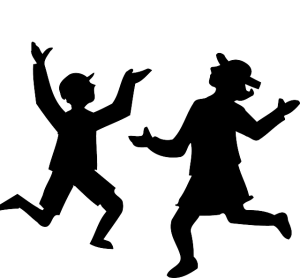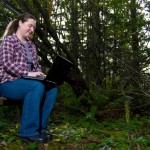Lovely write up about the DanceCraft study by the Informatics department here at UCI: http://www.informatics.uci.edu/informatics-ph-d-student-introduces-dancecraft-to-oc-autistic-children/

Lovely write up about the DanceCraft study by the Informatics department here at UCI: http://www.informatics.uci.edu/informatics-ph-d-student-introduces-dancecraft-to-oc-autistic-children/

The OC Register covered part of our research on dance for kids with autism yesterday. Check it out!
What the news article doesn’t mention is that along with dance lessons, the participants also get to take home the DanceCraft system so they can keep practicing their dance moves.
Individuals with autism and other neurodevelopmental disorders often experience sensory perception impairments, which can lead to challenges such as sensitivity to loud noises or irritation from specific textures on their skin. Atypical movement, such as rocking, can be exhibited as compensation for this sensory perception impairment.
Currently, therapists use dance therapy to stimulate the various senses in children with autism to help reduce atypical movement and to increase engagement in the activity. DanceCraft is a system developed to further the aims of dance therapy by increasing the children’s body awareness. We will be exploring how the software engenders different interactions styles to help inform the design of future systems focused on using body based movements to support dance therapy.


Dance Buddy animation is complete!
Yeah, that’s me being completely ridiculous after a very long day of programming.
[This is cross-posted on our Dance Craft website]
I made the trek across campus today to meet with Professor Andrew Palermo in UC Irvine’s Dance Department. I briefly pitched him our idea and explained what we could do with the Kinect. We talked about the dance classes he teaches at the local autism center. His classes consist of one part neurotypical dance class, one part partner dancing tailored to kids with autism, and one part dance routine. The dance routine is a composition of steps created by each person in the class. After our discussion, I am more excited than ever to move forward with our Dance Craft application for Kinect.
For our prototype that we will be demonstrating for the Autism AppJam, we will be creating an application that will encourage creative movement in the player/user. We will be focusing on something that can be used at home, outside of the dance class, to bring the creative motion out of the classroom and into the daily lives of the children. The great thing about this software is that set up and use will be fairly inexpensive for the typical. All that is needed is a computer to run the program, a Kinect, and a monitor/television.
I will leave you with a video of the inspiration behind Professor Palermo’s dance classes- a choreography called beyond.words:
© 2024 Kate Ringland, PhD
Theme by Anders Noren — Up ↑